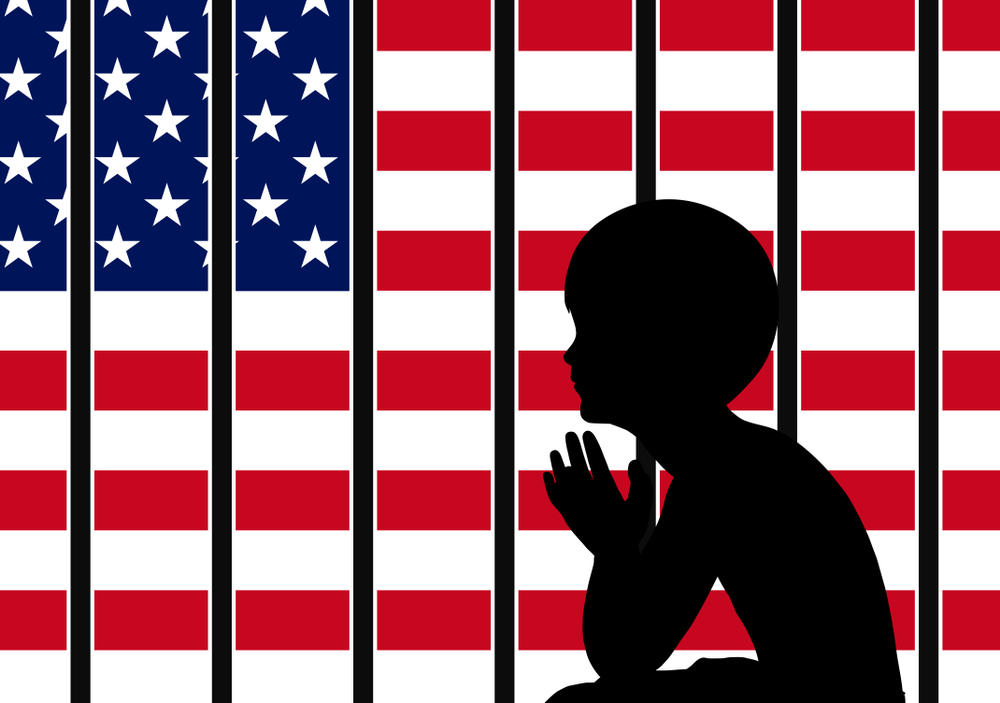On April 11, 2017, Attorney General Jeff Sessions issued a memorandum to all federal prosecutors along the southwest border of the United States to “adopt immediately a zero-tolerance policy” in response to illegal border crossings. In the year that followed, the administration stepped up its efforts to create disincentives for undocumented immigrants to enter the country including threat of immediate removal, limited access to due process and now, most recently and infamously, separating parents from their children once apprehended for illegal entry.
The separation policy was denounced by many, applauded by a few and even denied by others including—at least initially—the administration itself. In short order, however, whether one supported the policy or not, it became apparent that separating children from their parents is no small thing, not only logistically and operationally, but as a long-term proposition that extends far beyond immigration policy.

Marie Williams
Who would care for these thousands of children? In what kinds of facilities? For how long? And would they ever be reunited with their parents? If so, under what conditions, and what are the children’s legal rights? And who has standing to assert those rights?
In the short term, the administration said, they were “turning the children over to the Department of Health and Human Services” even as their parents were referred by Customs and Border Protection to the Department of Justice for prosecution, and afterward, detained by Immigration and Customs Enforcement. Given this labyrinth of agencies involved with the parents and children, it should come as no surprise that today, only a very small percentage of the more than 2,300 children separated from their parents have been reunited with them. It remains unclear where many of the children are and when the remaining reunifications will occur.
Fallout will continue
Some children have been pictured in news reports as being in congregate care facilities which, depending on whom you ask, are either comfortable and child-friendly, or inadequate even by the standards we hold for children charged with delinquent or criminal offenses. Others, we are told, have been sent to foster homes, though it is unclear where. Some reports have the children being sent to foster families hundreds of miles from the borders where they and their parents were apprehended. It is also unclear whether the foster families caring for them are equipped to handle the issues that will undoubtedly accompany children with whom they may have a language barrier, and who have recently experienced the acute trauma of forced separation from a parent.
Congressional testimony on June 26 given by Secretary of Health and Human Services Alex Azar acknowledging that his agency had not been consulted before the administration implemented the separation policy raised even more alarms. Though this was certainly not the secretary’s intent, his testimony painted the picture of a system suddenly deluged with scores of unanticipated children en masse, all of whom by nature of their circumstances may have extraordinary needs. Our current child welfare system, still struggling to deal with routine cases, must suddenly confront this new challenge as a collateral consequence of poorly thought-out immigration policy.
More troubling is the reality that even though the policy has now been rescinded, long after the cable news shows have turned their attention to another issue, the fallout of this “summer of separations” will continue to be felt. Though the vast majority of parents will certainly seek to be reunited with their children as soon as possible, others may make the calculated decision that having left dire circumstances in their home countries, their children may be better off here in the United States, even without them. And still others may face long delays, or perhaps never be reunited with their children, particularly if they are family not by blood, but by choice.
Many unanswered questions
And what of those youth who are approaching the age of majority? Will they be prosecuted as their parents might be? Placed into care only to be shortly thereafter deemed “independent,” albeit without legal immigrant status and skills to navigate the U.S.? Will/are they being schooled? Will they be deported or subject to deportation?
For the moment, these and many other questions remain unanswered. Though the sudden and chaotic influx of children is being faced most immediately by the child welfare system, school, behavioral and public health, and juvenile justice systems can almost certainly anticipate that they too will begin to experience some of the fallout.
Nationwide, child welfare systems have only just begun to grapple with the meaning of the recently enacted Family First Prevention Act, which among other things, incentivizes states to move away from congregate care for foster youth and provide services that enable them to remain at home or with relatives. Given that this is already an area in which systems struggle, an influx of new, potentially hard-to-place youth will only exacerbate the challenge. Similarly, our school systems face unique circumstances when dealing with undocumented youth and families, including inadequate resources to make school accessible for youth may who lack the documentation to enroll or, once enrolled, the language skills to be full participants in the learning process.
And juvenile justice systems, which have been generally slow to develop the cultural competencies necessary to serve even American youth of different ethnicities, may now have to learn to appreciate and address how social disenfranchisement of undocumented youth could lead to status offenses, and in the worst of circumstances, delinquency. To say nothing of behavioral and public health systems that must now accelerate their efforts to understand and address the trauma and poor physical health outcomes associated with the undocumented immigrant experience.
Though a few thousand more young immigrants will not break any of our child-serving systems, this recent border crisis underscores the need to act with urgency, and makes the action steps first published here on JJIE last year even more relevant than ever before.
On June 19, the National Council of Juvenile and Family Court Judges released a statement decrying the separation policy and its effects, warning that “not only are these children immediately traumatized, but also their chance for a productive and happy life is significantly reduced by the experience.” No one knows as well as those working in child-serving systems just how true this is. We should all begin to prepare now, because one thing is clear: Today’s immigration policies will have an extraordinary impact on child-serving systems tomorrow.
Marie N. Williams, J.D., is senior program officer at the Stoneleigh Foundation. Before that she was immediate past executive director of the Coalition for Juvenile Justice and a longtime advocate for social justice causes.
